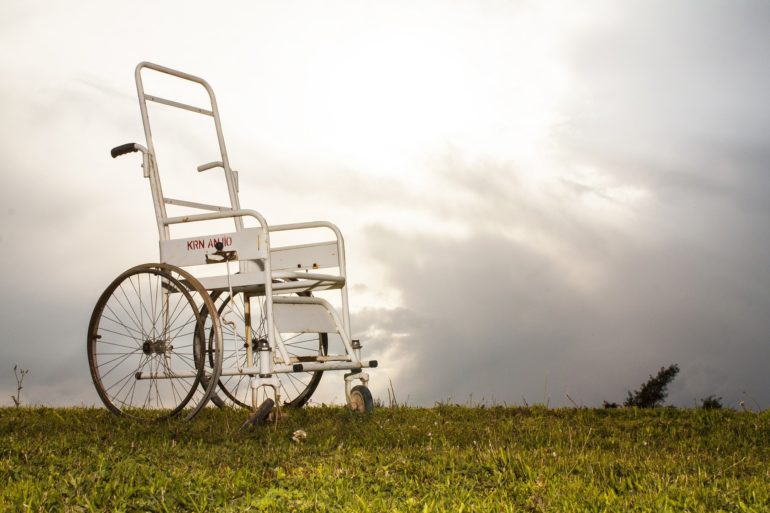Falls are the leading cause of preventable injury, and while many strategies have been developed to try to stop them and their resultant injuries, they remain a persistent problem. Research by Brigham and Women’s Hospital senior nurse scientist Patricia C. Dykes, Ph.D., MA, RN, and colleagues has been driven by the question: Why, after more than 30 years of research, do patients continue to fall? The answers that the team uncovered resulted in the creation of a toolkit that includes low-tech solutions, such as a laminated poster to display by patients’ beds, tailored prevention plans that can be added to patients’ electronic health records and printed out or displayed on a computer screensaver, and other interventions that engaged patients and their families in strategies to prevent falls. The investigators found that their program, which focused on tools that engage patients and families in the fall prevention process throughout hospitalization, was associated with significantly reduced falls and fall-related injuries at three different hospitals. The team’s results are published in JAMA Network Open.
“Our study highlights just how important it is to engage with patients for prevention,” said Dykes. “If you partner with your patient to identify the risks and talk about how we can prevent them as a team, then patients and families respond to this and rise to the occasion.”
In 2007, Dykes and colleagues began developing the Fall TIPS (Tailoring Interventions for Patient Safety) Toolkit, a nurse-led, evidence-based fall prevention intervention. As part of the program, nurses helped develop a personalized fall prevention plan tailored to each patient and used bedside tools to communicate patient-specific fall risk factors. In a randomized controlled trial at four Mass General Brigham hospitals in 2009, Fall TIPS reduced patient falls by 25 percent, but there was no difference noted in fall-related injuries, likely due to patient non-adherence to fall prevention plans.
To overcome these challenges, and in collaboration with Northeastern University’s Healthcare Systems Engineering Institute, Dykes and colleagues studied and conducted interviews with hospitalized inpatients, family members and providers. Based on insights from this research, they developed their toolkit to be more patient-centered and to address barriers for engaging patients and families in the fall-prevention process. This included a poster, hung at patients’ bedsides, that contained information about fall prevention which nurses completed on admission and at each shift with patients and their families. The team examined whether posters were updated and whether patients and families could articulate the fall risk factors and fall prevention factors.
The team conducted a non-randomized trial at three academic medical centers, including 12 adult-medical units at the Brigham, one at New York Presbyterian Hospital and one at Montefiore Medical Center Hospital between September 2015 and November 2016. More than 37,000 patients were evaluated. The team found that after the fall prevention toolkit was implemented, sites saw a 15 percent reduction in falls and a 34 percent reduction in injurious falls. The original Fall TIPS Toolkit was most effective among older patients, but the new study found important progress in falls prevention among younger patients.
The toolkit has now been adopted at the Brigham and across Mass General Brigham. Dykes and colleagues continue to solicit feedback from nurses through practice councils to find even more opportunities for improvement. They have also made the toolkit freely available on the web, at http://www.FallTIPS.org, for all other acute care settings to use. Already, the toolkit has been adopted by 150 hospitals in the U.S. and around the world.
“This work represents a collaboration across disciplines and the input of nurses, patients and their families,” said Dykes. “Falls take a staggering toll on patients and families, and we remain focused on continuing to decrease the rates of falls, especially injurious falls, at our hospital and globally.”
Large-scale fall prevention study finds smaller than expected benefit
More information:
Dykes PC et al. “Evaluation of a Patient-Centered Fall Prevention Toolkit to Reduce Falls and Injuries: A Nonrandomized Controlled Trial” JAMA Network Open,
DOI: 10.1001/jamanetworkopen.2020.25889
Provided by
Brigham and Women’s Hospital
Citation:
Toolkit to engage patients and families significantly reduced falls and injuries (2020, November 17)
retrieved 17 November 2020
from https://medicalxpress.com/news/2020-11-toolkit-engage-patients-families-significantly.html
This document is subject to copyright. Apart from any fair dealing for the purpose of private study or research, no
part may be reproduced without the written permission. The content is provided for information purposes only.



